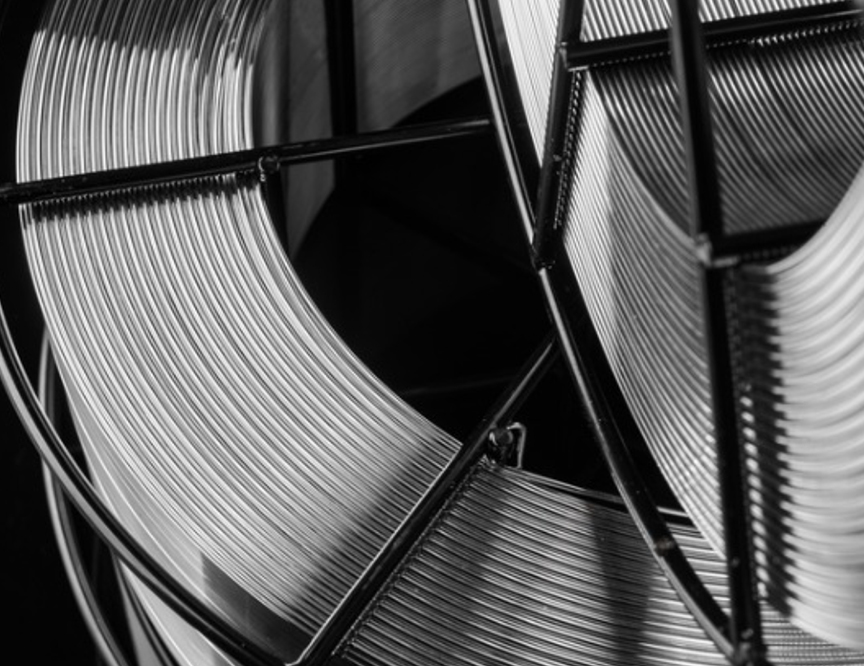Wire Applications
Trust Your Application to the Wire Experts
Wire is a versatile and essential component that’s used in applications for various industries, underpinning its importance in modern society. When you need quality wire for your application, count on the experts at Gerard Daniel to help you find exactly what you need.
With 70 years of industry experience, we have the knowledge and expertise necessary to provide you with wire that meets your specifications. If you ever have any questions about wire, such as which wire would work best for your application, please contact us for assistance.


Get Wire When You Need It
Our domestically drawn and imported wire comes in standard and customized sizes, alloys, shapes and packaging to ensure the perfect fit for your application.
Blanket orders, stock programs and just-in-time deliveries are available to keep your production line running smoothly. Once your wire is ready, we’ll deliver it to your production line exactly how you want it.
Continuous Replenishment Service
Select customers can gain access to our exclusive Continuous Replenishment Service (CRS) to ensure they never run out of wire. The service provides an agreed inventory that you can use and pull as needed. Plus, you don’t have to invest financially until it’s consumed.

High-Quality Wire for Any Application
Our wire is used in all kinds of applications. Browse our list of common wire applications to see how you can leverage wire for your needs. If there’s a specific type of wire you need that’s not listed here, get in touch with us to discuss how we can help.
Safety Lock Wire
Safety lock wire is threaded through fasteners to counteract the torque force of a fastener attempting to undo. It’s used in a wide variety of applications where failure cannot occur – such as mission-critical flight controls, throttle assemblies or safety guards. You can also find it in military standard MS20995 wire.
Our wire is supplied in standard 1lbs. spools or handi-cans. Larger spools are available upon request. We can supply all lock wire specifications, including those compliant with the DFARS special metals clause. (Please specify DFARS compliance when requesting either a quote or an order).
Tire Wire
Tie wire is fully annealed wire that’s used in the construction and insulation industry. Gerard Daniel’s annealing process continuously produces a soft but strong wire, giving it the flexibility that’s necessary for quick tying and the strength to hold.
It’s recommended to employ tie wire in bundling or securing products such as insulation, wire, rod, lumber, PVC tubes, pipe and rebar. Common alloys of tie wire are stainless steel, nickel, galvanized, black annealed, copper coated and PVC coated.
EPQ Wire (Forming Wire)
Electro-Polish Quality (EPQ) wire, also known as forming wire, is wire that has undergone a specialized electro-polishing process to achieve a high level of surface smoothness, cleanliness and uniformity. It’s commonly used in the medical, aerospace, electronics and automotive industries because cleanliness and corrosion resistance are crucial for success. The most popular alloy for EQP wire is 316 stainless steel.
At Gerard Daniel, we turn the wire into its desired form before it goes into an electrolytic bath. The electrochemical reaction strips the surface material, leaving wire that’s highly polished. EPQ wire is often used for making baskets, wire whisks, potato mashers and other kinds of food utensils.
Medical Wire
Medical wire is a specialized type of wire used in various medical applications, procedures and devices. We specifically design and manufacture medical wire to meet the requirements of the medical industry, including the ASTM F899 and ASTM F138 standards.
Medical wire is biocompatible, meaning it won’t cause any adverse reactions to the patient’s body. You can leverage medical wire for all kinds of applications, including surgical sutures, stents, catheters, guidewires, electrode leads and implantable devices.
Shaped Wire
Shaped wire is manufactured into a hex or square shape to meet specific functional or aesthetic requirements. While traditional wire is round, shaped wire is intentionally designed and formed into unique shapes to offer versatility, functionality and design flexibility.
Many industries use shaped wire, including automotive, aerospace, electronics, construction and manufacturing. You can incorporate shaped wire into various applications, including springs, key raises, electrical contacts, medical devices and automotive components.
Spring Wire
Spring wire is specifically manufactured for the production of springs. It’s made from high-quality nickel alloys with excellent elasticity, strength and durability. This allows the wire to withstand repeated bending and stretching without permanent deformation.
Spring wire is used across the automotive, firearm and irrigation industries. You can find spring wire in compression springs, extension springs, torsion springs, wire forms and other applications that require mechanical springs and components. Our spring wire meets the ASTM A313 standard.
Antenna Wire
Antenna wire is designed and used for the construction of antennas. An antenna is a device that transmits or receives electromagnetic signals, such as radio waves, to communicate or exchange information wirelessly.
Belt Wire
Belt wire is used in the manufacturing of belts, particularly in the automotive industry. Belt wires are typically steel wires that provide reinforcement and strength to various types of belts, including timing belts, serpentine belts, V-belts and conveyor belts.
Brush Wire
Brush wire is designed to provide bristle-like components for brushes, enabling them to perform specific functions such as cleaning, polishing or electrical contact. The strength, flexibility and bristle configuration depend on the intended application.
Cold Heading Wire
Cold heading wire is made specifically for cold heading processes in metalworking and manufacturing industries. Cold heading is a forming process where the wire is shaped into a specific part or component by applying pressure without heating the material. Instead, the wire is pushed through a die, and the head of the screw is shaped by applying pressure. You can use cold heading wire to produce cold-formed parts and components, including fasteners, 302HQ, rivets, pins, connectors and other small to medium-sized metal parts. The cold heading process enables us to produce a high volume of precision parts with excellent dimensional accuracy and consistency.
Dental Wire
Dental wire is thin, metallic wire that’s used to make braces, retainers and other dental applications. It comes in different gauges and forms and is typically made from stainless steel. Dental wire also helps to stabilize dentures and can be used in various oral surgical procedures, such as jaw wiring.
Filter Wire
Filter wire is used in filtration applications, which helps to remove or separate particles, impurities or contaminants from a fluid. Filter wire is often made from stainless steel or other corrosion-resistant alloys.
House Wire
House wire, also known as electrical wire or building wire, is used in control panels, buildings, factors, relay racks and other applications. It helps to transmit electrical power and signals throughout a structure safely.
Knitting Wire
Knitting wire is a thin and flexible wire that can be easily manipulated with knitting needles or crochet hooks to create decorative and functional items. It’s specifically designed for use in knitting or crocheting projects, such as wire jewelry and craft projects.
Orthodontic Wire
Orthodontic wire, also known as orthodontic archwire or braces wire, is a crucial component of braces that helps to straighten and align teeth. It’s often made using stainless steel or nickel alloys. The wires come in various sizes, shapes, and thicknesses to accommodate different stages of treatment and individual patient needs.
Pin Wire
Pin wire, also known as Kirschner wire or K-wire, is a thin, rigid wire made of stainless steel or other biocompatible materials. They have a pointed tip on one end and are available in varying diameters and lengths. Pin wire is used in orthopedic surgery and other medical procedures.
Rod Wire
Rod wire is a long, slender metal wire that’s cylindrical or rod-shaped. It’s often used in welding processes, construction reinforcements and electrical conductors. Rod wire is also the starting material for the wire drawing process, where it’s pulled through a series of dies to reduce its diameter and create a desired size and shape.
Screw Wire
Screw wire is used to make screws, bolts and other threaded fasteners. It’s a high-strength wire commonly made from stainless steel alloys. We use a screw machine to take a 12-foot metal bar and remove materials to make the screw head.
Tag Wire
Tag wire is a galvanized wire that's used to attach tags, labels or other lightweight items to objects. It’s often made with stainless steel alloys of provide strength and durability while remaining easy to work with. You’ll typically find tag wire used in retail stores, warehouses and manufacturing facilities.
Weaving Wire
Weaving wire is interlaced or woven together with other materials, such as yarn or fibers, to form woven patterns and designs. It can be made from different materials, like stainless steel, to meet the desired characteristics of the woven fabric. The choice of wire gauge, material and weaving pattern can significantly impact the final result, allowing for a wide range of artistic expressions.